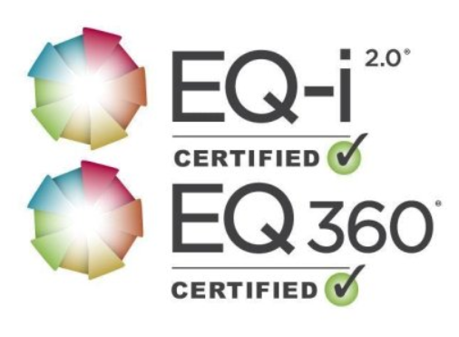
Overview
The Emotional Quotient Inventory 2.0 (EQ-i 2.0) measures an individual’s emotional intelligence. Science and professional feedback from the EQ-i® strengthened the direction of this second generation assessment. Now, it’s a complete experience with a new and intuitive model, customizable reports, and an online platform for easy administration.
Key Features:
- Generate a total EI score with five composite scores measuring distinct aspects of emotional and social functioning
- Gain a deeper understanding of how the results affect a participant’s workplace performance (conflict resolution, change management, teamwork, decision making and more) with strategies customized based on individual results
- Make instant connections between subscales and help participants leverage EI strengths and improve EI weaknesses
- Use the Well-Being Indicator to measure your client’s level of happiness; resulting in additional developmental opportunities
- Target solutions at every level with a multi-level approach to developing EI
- Reports are designed with clear instructions, interpretation guidelines and results-driven content setting you up for success

Reliability
The reliability of an assessment is often referred to as its consistency.
The two most important types of reliability for assessments are:
- Internal Consistency: refers to how well all the items of a certain scale measure the same idea
- Test-Retest: refers to how well the assessment can produce the same results over time for the same person
The EQ-i 2.0 exhibits strong reliability, both in terms of internal consistency and test-retest. This means that your clients’ scores will remain stable over time (unless development efforts are used to improve their scores) and that items measuring a certain subscale all tap into aspects of that subscale.
Validity
Validity ensures the accuracy and usefulness of an assessment. Although there are many different types of validity, they all focus on ensuring the assessment is measuring what it was designed to measure and whether it can predict important outcomes and can be assessed through a combination of several different types of validity evidence.
The EQ-i 2.0 was originally developed in North America but has been used in all regions of the world. The structure of the test, the consistency and accuracy of the items, and the results produced have been replicated across the globe and continues to enable a wide variety of cultures and languages to use the tool effectively to measure emotional intelligence. Overall, the EQ-i 2.0 has extensive evidence supporting its external validity: Predicts job performance, can be used to predict and improve leadership competencies, holds up in different regions across the world and is based on a history of assessment research spanning decades.
Normative Data
The general population normative sample for the EQ-i 2.0 is extensive (N=4,000) and closely representative of adults residing in the US (90% of the sample) and Canada (10% of the sample) within 4% of census data. A customer-based professional global normative sample (N=10,000) consisting of 154 countries was updated in 2014.
Other normative samples are available for the US & Canada (professional), the UK and Ireland (general population and professional), Australia (general population), Denmark (professional), and Sweden (professional).